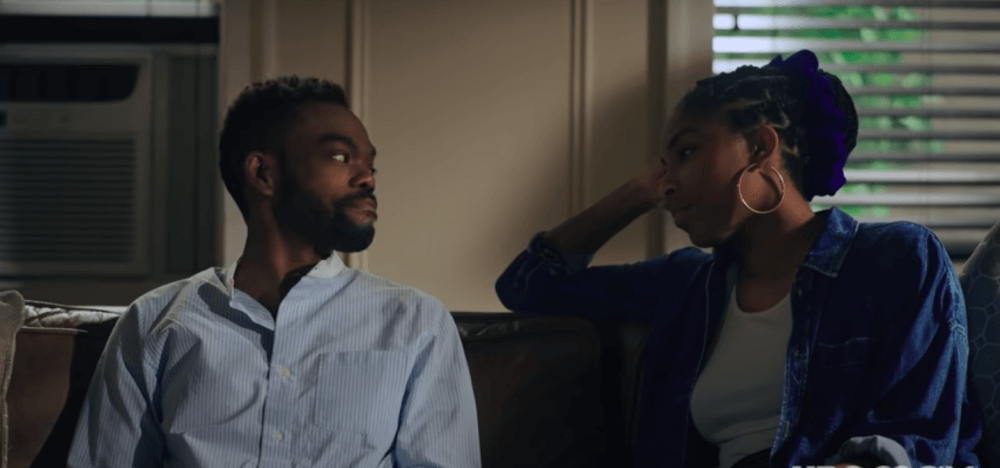HBO’s charming series, Love Life, first premiered in May 2020 as a scripted anthology series, following one character’s quest for love in New York City. The show came at a perfect time during the quarantine, offering much needed levity. Season two shakes up the classic rom-com roles and may just be changing the entire genre.
Season one followed the romantic entanglements of Anna Kendrick’s Darby. I enjoyed following Darby through her chaotic nights in New York City, awkward first dates, and messy debriefs with her roommates. While I related to Darby, the plot felt all too familiar: a 20-something white woman hopelessly looking for love.
Last month season two dropped. This season used the same ‘romance-per-episode’ structure, but instead we follow a young Black man. Enter: Marcus Wadkins (William Jackson Harper.) If season one gave us predictable, bland tropes, season two was full of surprises at every turn that genuinely got me thinking about gender, race, and love. While the show is lighthearted, I admired its dedication to contending with the very real struggles of dating as a Black man.
According to a 2020 study from National Research Group (NRG), two in three Black Americans feel that they don’t see their stories represented on the screen. While the study shows that there has been significant progress in Black representation in media since the 60s, it also shows that there are still many barriers to accurate representation of minorities in TV and movies. A 2017 report by Color of Change Hollywood found that only 4.8% of TV writers are Black.
How can we have authentic depictions of Black characters without Black people writing the stories? On this season of Love Life, a Black writer, Rachelle Williams, was brought on to co show run with Sam Boyd and Bridget Bedard.
It is clear from the beginning of the season that Marcus is extremely aware of his Blackness in a yuppie, mostly white world. We first meet him in 2016 at Darby’s wedding reception where he and Mia Hines (Jessica Williams) are some of the only Black guests. They immediately bond, but when Marcus points out his white wife Emily (Maya Kazan) to Mia, he is left feeling judged and questioning his attraction to white women. Even with a light tone, the show begs us to ask serious questions about the role of race in relationships.
In the premiere, we see that Marcus’ marriage has fallen into an unexciting rut, but his encounter with Mia brings to light a bigger issue that he can no longer ignore – his white wife’s inability to understand him as a Black man. While he never physically cheats on Emily, Marcus’ emotional relationship with Mia quickly leads to his marriage imploding.
Soon enough, Marcus finds himself as a single ‘30-something’ propelled back into the cesspool of hook-up culture. It is in this chaotic whirlwind of hook-ups that we see Marcus for who he really is: a lost, unsure divorcee trying to find himself for the first time.
Marcus doesn’t fall into the stereotypical depictions of Black men on screen (aggressive, angry, emotionally unavailable.) Instead, Harper adds elements of his anxious, awkward, but charming character, Chidi Anagonye on The Good Place, to his portrayal of Marcus in Love Life.
It is clear that Marcus is not the smoothest guy in the room. He can be stubborn and hot-tempered. He makes some terrible decisions, but you root for him anyway because he is self-aware and he tries to be better.
Black rom-coms have been on the decline since the early 2000s. Love Life is also evolving the genre by focusing entirely on Black people. The few white people who do show up in this season are peripheral characters.
I’d argue that Mia (Williams) is the real star of the season, which is integral in changing not only our perception of race in rom-coms, but also our perception of gender. In 2020, less than 6% of Black female TV characters were shown in a romantic relationship. Black women are the least likely of any race to be shown as the love interest in a TV series.
Mia is not only depicted as Marcus’ object of desire, but she is also portrayed as a force herself. She is a tall, beautiful, NYC working woman who is clearly used to keeping men on their toes. In one episode it is revealed that she is dating the basketball player, Amar’e Stoudemire.
In the beginning of the series, Mia resists vulnerability. In one episode we find out that she is the daughter of a young mother and a largely absent father and has taken on the role of caretaker in her family. But over time she lets down her guard with Marcus.
Mia and Marcus have clear chemistry from their first meeting. What starts as a flirty friendship blossoms into an authentic love story because of their willingness to be vulnerable with one another.
Because Marcus, a man, is the one searching for a love interest and Mia, a woman, is a full, complex character herself, their relationship feels real and whole. Mia is neither Marcus’ possession nor his savior. She is simply his shining counterpart which makes their love story a refreshing tale of two equals.
header: screenshot from youtube


